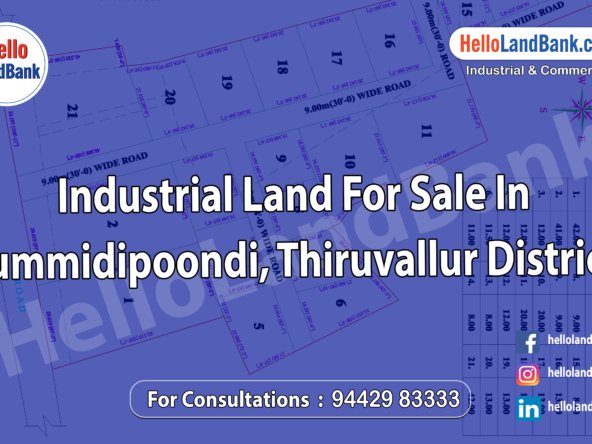Site planning for industrial land involves strategic decision-making to optimize the layout, functionality, and efficiency of the property for industrial use. Here are key considerations to keep in mind when planning the development of industrial land:
1. Zoning and Land Use Regulations:
- Understand the zoning regulations and land use restrictions applicable to the industrial property. Ensure compliance with zoning requirements regarding allowable land uses, setbacks, building heights, lot coverage, parking requirements, and other land use regulations.
2. Site Accessibility and Transportation:
- Evaluate access to the industrial site and transportation infrastructure, including roadways, highways, railroads, ports, and airports. Consider proximity to major transportation routes and logistics hubs to facilitate efficient movement of goods and materials to and from the site.
3. Utility Infrastructure:
- Assess the availability and capacity of utility infrastructure, including water supply, sewer systems, electricity, gas, telecommunications, and internet connectivity. Ensure adequate utility connections to support industrial operations and accommodate future expansion needs.
4. Topography and Site Characteristics:
- Consider the topography, soil conditions, drainage patterns, and natural features of the industrial site. Evaluate site suitability for development, grading requirements, floodplain considerations, and environmental constraints such as wetlands or protected habitats.
5. Site Layout and Building Placement:
- Develop a site layout that optimizes the use of available space and facilitates efficient workflows for industrial operations. Determine the placement of buildings, structures, loading docks, parking areas, storage yards, and outdoor storage facilities to maximize functionality and operational efficiency.
6. Building Design and Construction:
- Design industrial buildings and structures to meet the specific needs of industrial tenants or users. Consider factors such as building size, height, layout, floor loading capacity, clear height, column spacing, and access for vehicles and equipment. Incorporate sustainable design principles and energy-efficient features to minimize environmental impacts and operating costs.
7. Security and Safety:
- Implement security measures and safety protocols to protect the industrial site, buildings, and occupants from potential risks such as theft, vandalism, accidents, and natural disasters. Install security fencing, lighting, surveillance cameras, access control systems, fire suppression systems, and emergency response measures to ensure a safe and secure working environment.
8. Environmental Considerations:
- Conduct environmental assessments to identify potential environmental risks and mitigation measures for the industrial site. Address any environmental issues such as contamination, pollution, hazardous materials, or habitat impacts through remediation, mitigation, and compliance with environmental regulations.
9. Landscaping and Aesthetics:
- Incorporate landscaping, green spaces, and aesthetic enhancements to improve the visual appeal and environmental quality of the industrial site. Plant native vegetation, trees, and shrubs to enhance biodiversity, provide screening, and mitigate visual impacts.
10. Flexibility and Future Expansion:
- Design the industrial site with flexibility to accommodate future growth and changes in industrial operations. Plan for scalability, adaptability, and expansion by reserving space for future development, infrastructure upgrades, and reconfiguration of site layouts.
By considering these key factors in site planning for industrial land, you can create a well-designed and functional industrial site that meets the needs of industrial users, complies with regulatory requirements, and supports sustainable growth and development. Collaboration with architects, engineers, planners, and other professionals can help ensure a comprehensive and effective site planning process




